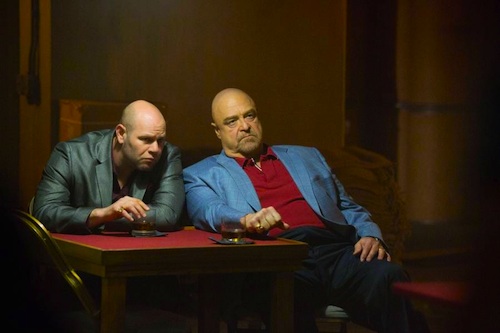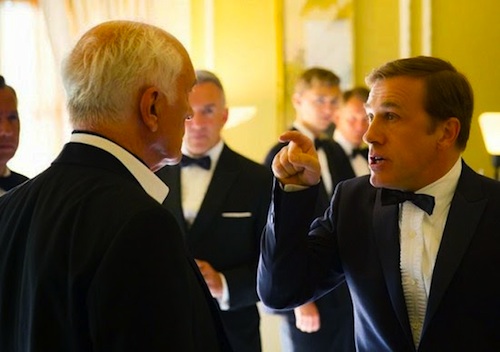By Joe Bendel. They say gambling is a victimless crime, but not in Jim Bennett’s case. Anyone too closely linked to the degenerate literature professor could find themselves in a world of collateral hurt. The same goes without saying for Bennett, but that seems to be part of his wildly self-destructive plans. Several very large debts will inevitably come due in Rupert Wyatt’s Christmas Day release, The Gambler, a loose remake of the moody 1970s James Caan vehicle considered to be partially inspired by the Dostoyevsky novel of the same name.
Bennett’s beloved grandfather has just passed away, leaving him nothing, because he is a total mess. He shouldn’t need an inheritance, as a gainfully employed academic with one reasonably well received novel under his belt. Unfortunately, Bennett can rack up debt quicker than a president with no private sector experience. We will see him do it during the first of many trips to an underground casino.
Bennett has amassed $240,000 in gambling debts to the Korean mob, led by the severe Mr. Lee. You really do not want to owe him money. To keep playing and keep losing, Bennett borrows fifty K from loanshark Neville Baraka. You really, really do not want to owe him money. He is up briefly, but eventually he blows through that as well. After being rebuffed by his wealthy mother, Bennett explores the possibility of yet another loan from Russian mobster “Frank,” who is a real character. You really, really, really do not want to owe him money. In fact, Frank is so hardcore, he even gives Bennett pause. Nevertheless, it is only a matter of time before they do business together.
Wyatt’s Gambler is way better than you would expect, but it is almost entirely due to the villains. John Goodman’s Frank gets a good number of laughs throughout the film, but he is still scary as all get-out. Given his record of memorable supporting turns in award-contending films (Argo, The Artist, Inside Llewyn Davis), Goodman arguably deserves an honorary Oscar by now. As usual, he makes the film. Likewise, Michael Kenneth Williams regularly upstages his more famous co-star as the flamboyantly ruthless Baraka, while Alvin Ing also makes quite an impression as the icily intense Mr. Lee. Even Anthony Kelley earns some notice as Lamar Allen, Bennett’s star basketball player student, who may or may not shave some points for his prof.

To an extent, Mark Wahlberg convincingly falls apart as Bennett. However, he conspicuously overplays screenwriter William Monahan’s vastly overwritten, bombastic, self-loathing classroom lectures. You’d think he was trying to be Meryl Streep in Osage County, but at least he is not half as embarrassing. On the other hand, the role of Amy Phillips, Bennett’s student-slash-potential love interest-slash-witness to his implosion is not exactly what you would might similarly describe as overwritten. Frankly, Brie Larsen, last year’s indie sensation in Short Term 12, looks like she regrets every minute playing her.
Regardless, Wyatt keeps the pace brisk and cinematographer Greig Fraser gives it all a hazy City of Angels noir sheen. It is often quite visually dynamic and whenever he needs help, Wyatt can count on Goodman for an injection of adrenaline through the film’s breastplate. Recommended for those who enjoy distinctive heavies, The Gambler opened nationwide on Christmas day, including at the Regal Union Square in New York.
LFM GRADE: B
Posted on December 29th, 2014 at 2:38pm.
